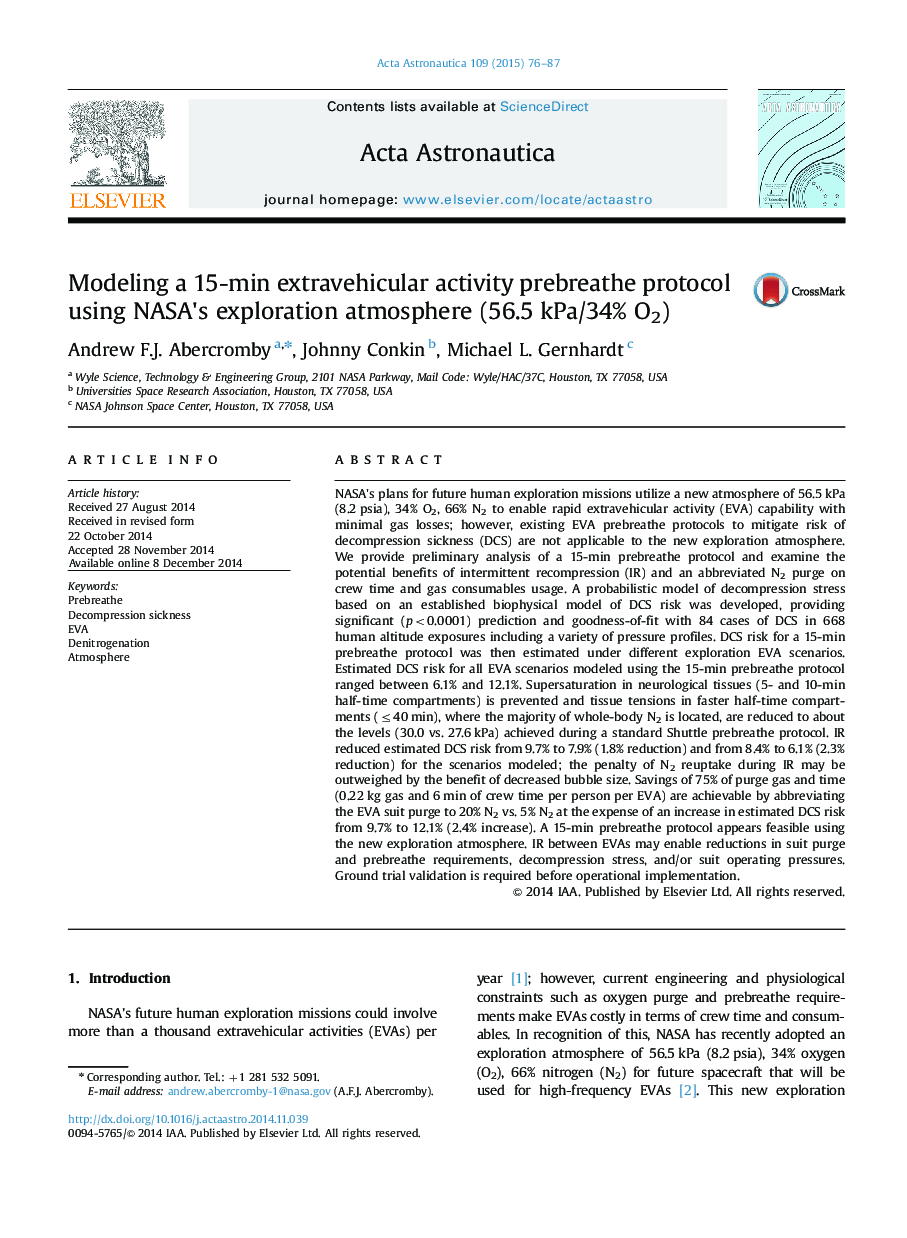| Article ID | Journal | Published Year | Pages | File Type |
|---|---|---|---|---|
| 8056664 | Acta Astronautica | 2015 | 12 Pages |
Abstract
NASA׳s plans for future human exploration missions utilize a new atmosphere of 56.5 kPa (8.2 psia), 34% O2, 66% N2 to enable rapid extravehicular activity (EVA) capability with minimal gas losses; however, existing EVA prebreathe protocols to mitigate risk of decompression sickness (DCS) are not applicable to the new exploration atmosphere. We provide preliminary analysis of a 15-min prebreathe protocol and examine the potential benefits of intermittent recompression (IR) and an abbreviated N2 purge on crew time and gas consumables usage. A probabilistic model of decompression stress based on an established biophysical model of DCS risk was developed, providing significant (p<0.0001) prediction and goodness-of-fit with 84 cases of DCS in 668 human altitude exposures including a variety of pressure profiles. DCS risk for a 15-min prebreathe protocol was then estimated under different exploration EVA scenarios. Estimated DCS risk for all EVA scenarios modeled using the 15-min prebreathe protocol ranged between 6.1% and 12.1%. Supersaturation in neurological tissues (5- and 10-min half-time compartments) is prevented and tissue tensions in faster half-time compartments (â¤40 min), where the majority of whole-body N2 is located, are reduced to about the levels (30.0 vs. 27.6 kPa) achieved during a standard Shuttle prebreathe protocol. IR reduced estimated DCS risk from 9.7% to 7.9% (1.8% reduction) and from 8.4% to 6.1% (2.3% reduction) for the scenarios modeled; the penalty of N2 reuptake during IR may be outweighed by the benefit of decreased bubble size. Savings of 75% of purge gas and time (0.22 kg gas and 6 min of crew time per person per EVA) are achievable by abbreviating the EVA suit purge to 20% N2 vs. 5% N2 at the expense of an increase in estimated DCS risk from 9.7% to 12.1% (2.4% increase). A 15-min prebreathe protocol appears feasible using the new exploration atmosphere. IR between EVAs may enable reductions in suit purge and prebreathe requirements, decompression stress, and/or suit operating pressures. Ground trial validation is required before operational implementation.
Related Topics
Physical Sciences and Engineering
Engineering
Aerospace Engineering
Authors
Andrew F.J. Abercromby, Johnny Conkin, Michael L. Gernhardt,
